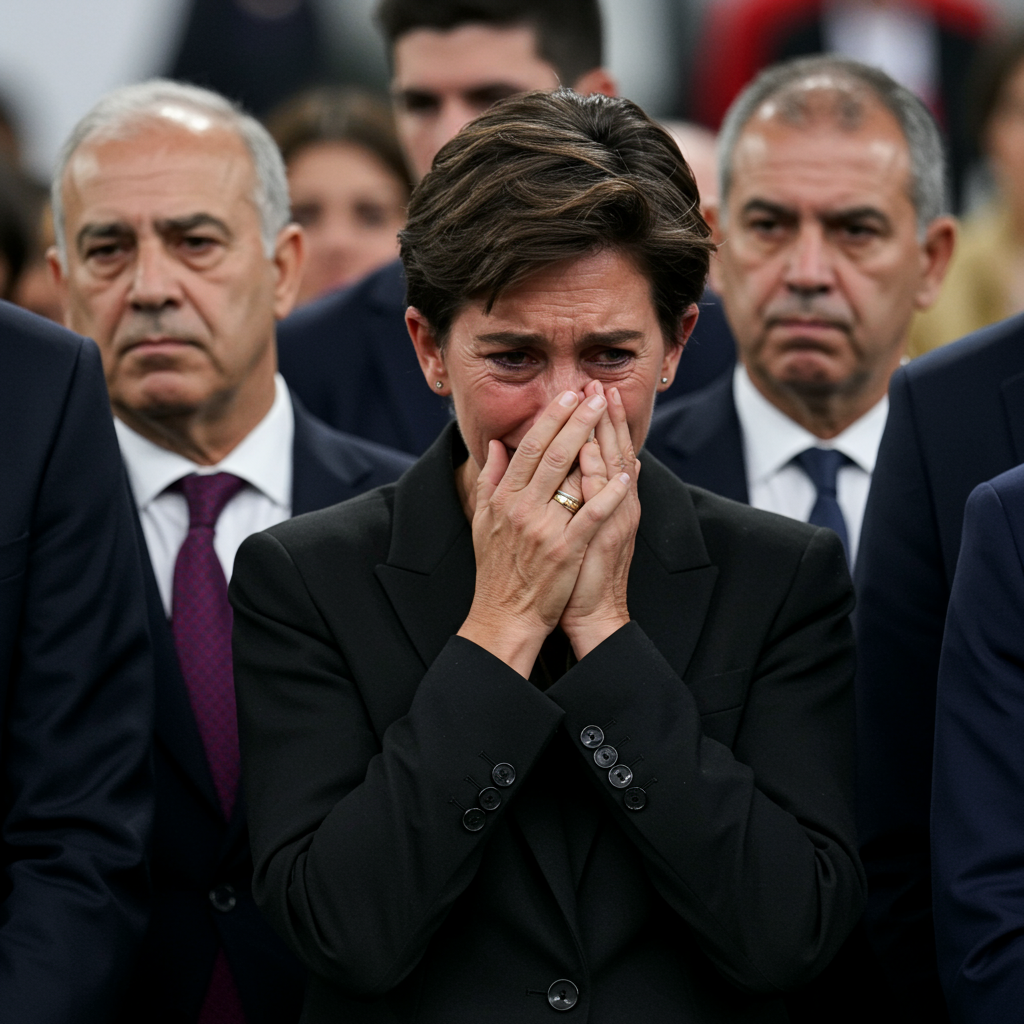French President Emmanuel macron embarks on a pivotal three-day state visit to the United Kingdom this week. While London rolls out the traditional red carpet, complete with royal welcomes and state banquets, a formidable economic shadow looms large. The unpredictable threat of global tariffs from former U.S. President Donald Trump is poised to dominate discussions and potentially overshadow the diplomatic pomp surrounding Macron’s historic trip. This visit marks the first by an EU leader to the UK since the complexities of Brexit redefined the relationship, adding layers of significance to every interaction.
Royal Welcome Amidst Geopolitical Tensions
Upon arrival in England, President Macron and his wife Brigitte were greeted by the Prince and Princess of Wales, William and Kate. This initial warm reception set the tone for the ceremonial aspects of the visit. The French presidential couple was then transported to Windsor, where they were scheduled to meet with King Charles III and Queen Camilla. A grand state banquet was planned for the evening, symbolizing the deep historical ties and renewed friendship between the two nations post-Brexit. The British government explicitly highlighted the visit’s potential as “a historic opportunity to showcase the breadth of the U.K.-France relationship,” underscoring the strategic importance placed on strengthening bonds despite past disagreements.
State Visit Agenda and Key Meetings
Beyond the ceremonial engagements, President Macron’s itinerary included crucial political and business meetings. He was set to address lawmakers in London, providing a platform to articulate France’s perspective on pressing international issues. Discussions with business leaders were also on the agenda, aimed at fostering economic cooperation and exploring trade opportunities between the UK and France. A significant part of the visit involves talks with Prime Minister Keir Starmer during a France-British summit. According to the U.K. government, these discussions are expected to concentrate on vital shared priorities. These include navigating the complexities of migration, enhancing trade relationships, and bolstering defense and security cooperation in an increasingly uncertain global landscape.
The Looming Threat of Trump’s Tariffs
Despite the focus on UK-France relations, the specter of Washington’s economic policies, particularly Donald Trump’s tariff regime, hangs heavily over the visit. This “thorny issue” presents a significant challenge for European leaders. Trump’s approach to international trade is widely seen as unwieldy and unpredictable. Experts fear his potential actions could severely impede both European and global economic growth. The uncertainty surrounding U.S. trade policy adds a critical layer of complexity to diplomatic engagements worldwide.
Trump’s Latest Tariff Actions
The concern was heightened recently when Donald Trump took to social media to share screenshots of purported letters sent to 14 countries. These nations, including key economies like Japan, South Korea, and South Africa, were reportedly informed they faced steep increases in trade tariffs. The original deadline for these higher tariffs, initially July 9, was extended. White House Spokesperson Karoline Leavitt indicated that more such letters were forthcoming. While the European Union was not among the recipients of these initial letters, the move put the entire bloc, including major players like France, on high alert regarding potential future actions.
The EU’s Scramble for a Trade Deal
In response to this palpable threat, hopes have reportedly surged within the EU for a swift trade deal with the United States. The aim is to potentially secure an agreement this week. However, the potential benefits or disadvantages of such a deal for Brussels remain uncertain. Emmanuel Macron, leading the EU’s second-largest economy, arrives in the UK with this significant unresolved issue at the forefront of his mind. The pressure to secure a favorable trade arrangement is immense.
Obstacles in US-EU Trade Negotiations
Market observers like Holger Schmieding, chief economist at Berenberg Bank, noted the reported rush by the EU to conclude a deal. Despite the urgency, Schmieding cautioned that “major stumbling blocks remain” in the negotiations. He explained that the EU appears to have “grudgingly accepted” the current U.S. base tariff of 10% plus certain sectoral tariffs as non-negotiable starting points. The European side is still pushing for limited exemptions from these tariffs. Specifically, sectors like aircraft and aircraft parts are areas where the EU hopes to gain concessions. Their goal is to keep the overall increase in the average U.S. tariff on EU imports below 10 percentage points this year. However, the U.S. side has, so far, threatened to impose tariffs exceeding that threshold, illustrating the difficult road ahead for negotiators.
UK-France Relations Post-Brexit and Diplomatic Dynamics
The state visit itself carries considerable symbolic weight, being the first by an EU leader since the UK’s departure from the bloc. Britain is keen to demonstrate its commitment to international partnerships, particularly with close neighbors like France. The UK is utilizing its renowned skills in pomp and pageantry to underscore the importance of this relationship. The royal welcome, the carriage procession, and the state banquet all serve this purpose.
Warm Ties with the British Royals
The Macrons are known to share a warm personal relationship with the British royal family. This rapport was evident during King Charles III’s state visit to France in 2023. On that occasion, the King earned significant praise from Paris when he addressed the French Senate. His fluency in French, showcased during the speech, resonated deeply with French audiences and symbolized mutual respect and understanding. This personal connection between the leaders adds another layer to the current state visit, potentially easing diplomatic pathways even amidst policy disagreements.
Macron, Trump, and Starmer: A Complex Triangle
The dynamic between Macron, Trump, and the current UK leadership under Keir Starmer adds intriguing complexity. Starmer appears to have cultivated a relationship with Donald Trump, despite their differing political stances. This connection could potentially position Starmer as a useful intermediary. As the EU continues its sensitive trade negotiations with Washington, Starmer might be able to offer Macron insights or even facilitate indirect communication channels. Trump himself has publicly stated his preference for the UK. He matter-of-factly noted that the UK was the first country to strike a trade deal with Washington following Brexit. He even suggested the UK would likely be shielded from future tariffs “because I like them.” This contrasts sharply with Macron’s relationship with Trump. The French president has faced public humiliation from the former U.S. leader on multiple occasions, including being described as “publicity seeking” at a previous G-7 meeting.
Potential Economic and Diplomatic Fallout
The potential imposition of significant U.S. tariffs could have wide-reaching implications. For the EU, it risks damaging key industries and potentially triggering retaliatory measures, escalating a trade war. For the UK, while potentially exempted initially, its economic health is still intertwined with the EU’s. A weakened European economy would likely impact UK trade and investment. Macron’s visit is therefore not just about bilateral UK-France ties; it’s a moment to discuss a united European front (with the UK as a close partner) against potential external economic pressures. The conversations between Macron and Starmer will undoubtedly touch upon strategies to navigate this complex geopolitical and economic landscape. The outcome of the US-EU trade talks, happening concurrently, will profoundly affect the economic backdrop against which UK-France cooperation unfolds.
Frequently Asked Questions
What are Trump’s latest tariff threats mentioned in the article?
Former U.S. President Donald Trump recently indicated potential significant increases in trade tariffs. He shared screenshots of letters sent to 14 countries, including Japan and South Korea, warning of tariff hikes starting August 1 (extended from an earlier July 9 deadline). While the EU did not receive a letter on Monday, the move signals a potential broader application of tariffs that could impact European trade.
Who did Macron meet during his state visit to the UK?
During his state visit, French President Emmanuel Macron and his wife Brigitte were formally greeted by the Prince and Princess of Wales, William and Kate. They were then scheduled to meet with King Charles III and Queen Camilla at Windsor, including participating in a carriage procession and attending a state banquet. President Macron also planned meetings with UK business leaders and Prime Minister Keir Starmer for political talks.
How might Trump’s tariffs impact EU-US trade deal talks?
The threat of looming U.S. tariffs is creating urgency for the EU to finalize a trade deal with the U.S., possibly this week. The EU is reportedly prepared to accept a 10% base tariff but is seeking specific exemptions, like for aircraft parts. However, the U.S. has threatened higher tariff rates than the EU hopes to face, creating significant hurdles in the negotiations and making the potential outcome uncertain for the bloc’s economy.
Conclusion
President Macron’s state visit to the UK is a critical moment for reinforcing bilateral ties in the post-Brexit era. The royal welcome and diplomatic agenda highlight mutual priorities from migration to defense. However, the shadow of potential U.S. tariffs under Donald Trump serves as a stark reminder of the global economic volatility impacting even the most carefully planned diplomatic engagements. The outcome of ongoing US-EU trade negotiations will be closely watched, as it could significantly influence the economic context for both France and the UK. This visit underscores the intricate web of international relations, where domestic political shifts in one major power can profoundly affect diplomatic and economic landscapes across continents.
Word Count Check: 1040


